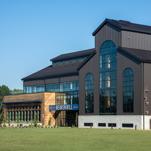Don’t Miss Out on Budapest, One of Europe’s Most Charming Cities
Photo courtesy of Pixabay
Europe is a magical wonderland, filled with charming, historical cities waiting to be discovered. While most might add the bright lights of Paris, Rome, Berlin, Amsterdam or Barcelona to the itinerary of their next European adventure, there are plenty of less heralded destinations for those looking to wander down a road less traveled by. Hungary’s extraordinary capital, Budapest, is one such city, filled with historic sites, gothic architecture, exquisite culinary delights and a captivating culture ready to be explored.
-

-

-

-

-

-

-

-

-

-

-

-

-

-

-

-

-

-

-

-

-

-

-

-

-

-

-

-

-

-

-

-

-

-

-

-

-

-

-

-








































